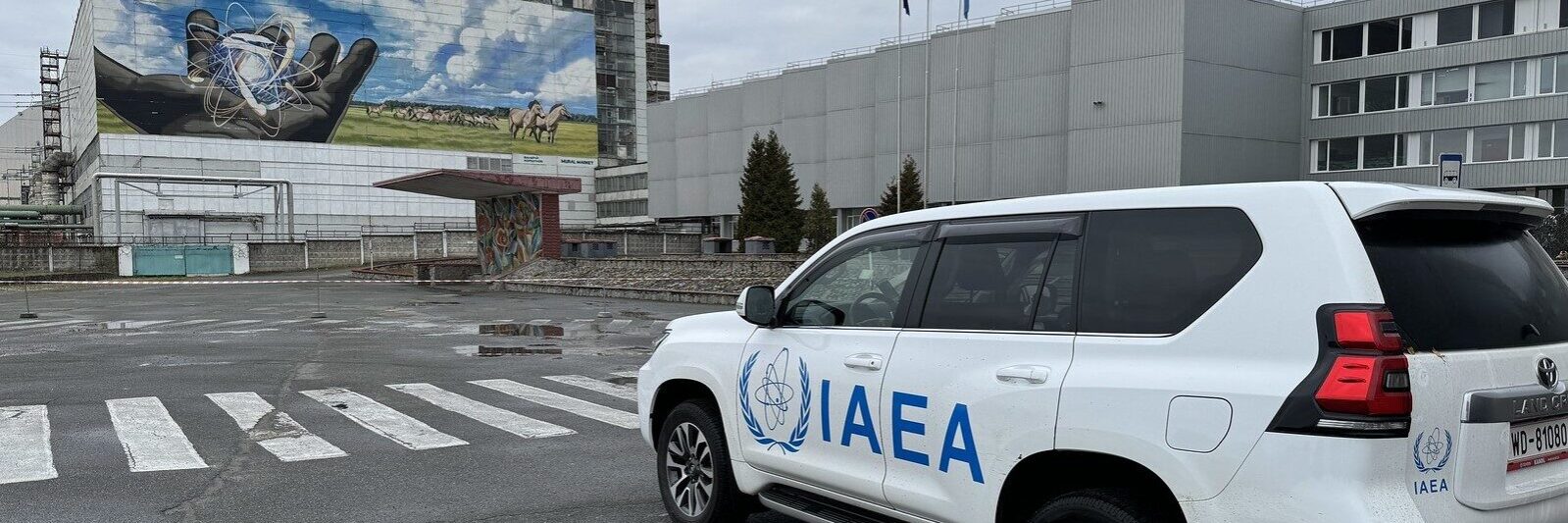A UN vehicle at the Chornobyl nuclear power plant late last year. Photo: Fredrik Dahl / IAEA
UN and Ukrainian nuclear staff are braving Russian gunfire and drones to keep Ukraine, and the rest of Europe, safe from radioactive fallout.
Staff have been working to repair drone damage to the containment building at the site of the 1986 Chornobyl disaster and keep the other power plants operating safely.
International Atomic Energy Agency (IAEA) Director General Rafael Mariano Grossi says Ukrainian workers completely smothered fires and smouldering at the Chornobyl building.
A drone strike on February 14 blew a large hole through the roof of the containment building that envelops the damaged reactor.
“The site is now focusing its efforts on assessing the full extent of the damage while also carrying out short-term repairs,” Grossi says.
“It is clear that the confinement structure suffered extensive damage.”
But he adds that there has not been any radioactive release and that the containment building is still performing its function.
POWER PLANTS REPORT
IAEA staff at the Zaporizhzhya Nuclear Power Plant (ZNPP) have been able to inspect the emergency control rooms of all six reactors.
At Ukraine’s other operating plants (Khmelnytskyy, Rivne and South Ukraine), three of a total of nine reactors have been shut down for maintenance and refuelling outages.
Grossi says at the South Ukraine NPP, several air raid alarms were reported over the past week.
There were reports from the IAEA team that six drones were detected about 1.5 km from the plant on Friday, April 25, as was attempts to shoot them down.
At the Khmelnytskyy NPP, UN staff were forced to take shelter on April 30 due to a morning air raid alert.
“What was once virtually unimaginable – evidence of military action in the vicinity of a major nuclear facility – has become a near daily occurrence and a regular part of life at Europe’s largest nuclear power plant,” Grossi says.
“From a nuclear safety perspective, this is clearly not a sustainable situation.”





